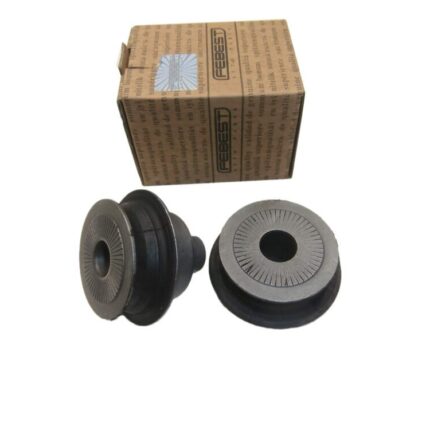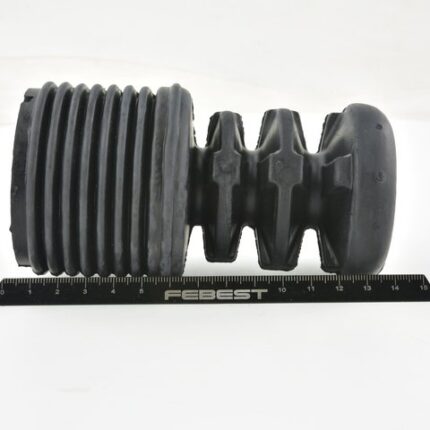-17%
Rear Pad Kit Disc Brake Mazda 6 GG, 6 Wagon GY
Brake pads play a pivotal role in a vehicle’s braking system, providing the necessary friction to slow down and stop the vehicle safely. As essential components, brake pads undergo significant stress during daily driving, making their proper function crucial for vehicle safety. Understanding the importance of brake pads and recognizing signs of wear is essential for maintaining optimal braking performance and ensuring the overall safety of the vehicle and its occupants.
Importance of Brake Pads:
- Friction for Deceleration: The primary function of brake pads is to create friction against the rotating brake discs (or rotors) when the brake pedal is engaged. This friction generates the necessary force to decelerate the vehicle, converting kinetic energy into heat and bringing the vehicle to a controlled stop.
- Heat Dissipation: Brake pads play a crucial role in managing heat generated during braking. Efficient heat dissipation is essential to prevent brake fade, a condition where braking performance diminishes due to excessive heat buildup. High-quality brake pads are designed to withstand and dissipate heat, ensuring consistent braking performance.
- Smooth Operation: Well-maintained brake pads contribute to smooth and predictable braking. They provide consistent and responsive braking performance, allowing drivers to modulate braking force effectively. This smooth operation enhances overall driving experience and contributes to driver confidence.
- Reduced Wear on Brake Discs: Brake pads act as sacrificial components that wear over time. By absorbing the friction and heat generated during braking, they help protect the more expensive brake discs from excessive wear. Regular replacement of brake pads is a cost-effective measure to prevent damage to the brake discs.
- Minimized Noise and Vibration: Quality brake pads are designed to minimize noise and vibration during braking. Anti-noise shims and advanced friction materials contribute to a quieter and more comfortable braking experience. This not only enhances the driving comfort but also reduces wear on other components in the braking system.
- Compatibility with Brake Discs: Brake pads are engineered to work in harmony with brake discs. The composition, surface finish, and design of brake pads are optimized to complement the characteristics of specific brake disc materials. This compatibility ensures efficient braking, minimizes noise, and promotes even wear on both brake pads and discs.
Signs of Worn-Out Brake Pads:
- Reduced Brake Pad Thickness: One of the primary signs of worn-out brake pads is a reduction in thickness. Over time, as brake pads wear, their thickness decreases. Manufacturers typically provide a minimum thickness specification, and once brake pads approach or fall below this limit, replacement is necessary to maintain effective braking.
- Squeaking or Squealing Noises: High-pitched squeaking or squealing noises during braking are indicative of worn brake pads. These sounds are often produced by wear indicators, small metal tabs built into the brake pad design. When the brake pads wear down, these indicators come into contact with the brake disc, producing an audible warning that it’s time for replacement.
- Grinding Noises: A more severe sign of worn-out brake pads is a grinding noise during braking. This noise occurs when the brake pad material is nearly depleted, and the metal backing of the pad comes into direct contact with the brake disc. Grinding noises signal significant wear and potential damage to both the pads and the discs.
- Increased Stopping Distance: Worn brake pads result in diminished braking efficiency, leading to an increase in stopping distance. If the vehicle takes longer to come to a complete stop or if the brakes feel less responsive, it suggests that the brake pads are reaching the end of their effective life and require prompt replacement.
- Vibration or Pulsation: Uneven wear on brake pads can cause vibrations or pulsations during braking. This phenomenon, known as brake judder, is felt through the brake pedal or steering wheel. Brake judder indicates an imbalance in the braking system, often attributed to unevenly worn brake pads or warped brake discs.
- Visible Wear or Cracks: Visual inspection of the brake pads can reveal signs of wear or damage. If the brake pad material appears significantly worn, exhibits deep grooves, or shows cracks, it indicates the need for replacement. Damaged or deteriorating brake pads compromise braking performance and safety.
- Warning Indicator Light: Many modern vehicles are equipped with brake pad wear indicator systems that illuminate a warning light on the dashboard when the brake pads are nearing the end of their life. Ignoring this warning could lead to more extensive damage and compromise braking effectiveness.
Conclusion:
Brake pads are indispensable components of a vehicle’s braking system, directly influencing safety and performance. Recognizing the signs of worn-out brake pads, such as reduced thickness, noises, increased stopping distance, and visible wear, is crucial for maintaining optimal braking efficiency and ensuring the safety of the vehicle and its occupants. Regular inspections, timely replacements, and adherence to recommended maintenance schedules contribute to the longevity and reliability of brake pads, supporting a secure and controlled driving experience. By understanding the importance of brake pads and staying vigilant for signs of wear, vehicle owners can uphold the integrity of their braking systems and promote safe journeys on the road.



